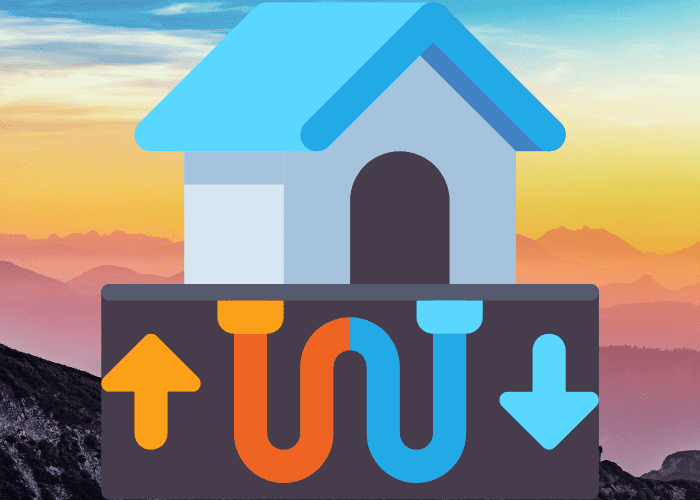The Spectacular Benefits of Geothermal Heating and Cooling
By My Service Depot on Thursday, September 29, 2022Geothermal systems are extremely efficient, and they can provide a building with a comfortable indoor climate year-round. Learn everything you need to know.
Geothermal heating and cooling is a type of technology that harnesses the Earth’s natural heat to provide homes and businesses with an efficient and sustainable source of heating and cooling. They work by using a series of underground pipes to tap into the Earth’s constant temperature.
These systems are extremely efficient, and they can provide a building with a comfortable indoor climate year-round. Best of all, geothermal systems have very low operating costs and emit no greenhouse gases, making them an environmentally friendly option for heating and cooling your home or office. Geothermal energy is even considered a renewable energy source which can make it better for long-term use.
Geothermal Tech
Geothermal heating and cooling is a technology that uses the Earth’s natural heat to provide heating and cooling for buildings. This technology can be used for both new construction and retrofits of existing buildings. Geothermal systems use a series of pipes called a loop to transfer heat from the ground to the building or vice versa. There are two main types of geothermal systems: closed loop and open loop.
Closed Loop Systems
Closed loop systems are the most common type of system. In a closed loop system, a pump circulates water or antifreeze through a series of pipes buried in the ground. The heat from the Earth transfers to the fluid in the pipes, and then the fluid is circulated back to the building to provide heating or cooling.
Open Loop Systems
Open loop systems are used when there is access to a body of water, such as a lake or river, that can be used as a heat source or sink. In an open loop system, the water from the body of water is used to transfer heat to or from the ground. The water is then returned to the body of water.
Closed vs Open
Open loop systems are often cheaper because they require less initial work to install and don’t require the burying of hundreds of feet of piping. Although they are often cheaper they are also only possible if there is a good source of fresh water with access nearby. Closed loop systems, however, are much more suited for smaller homes and buildings especially when there is not a body of water close by. Closed loops often last longer due to the fact that they aren’t as exposed to any hazards.
While both systems have their advantages and disadvantages, it depends on your situation, and is ultimately up to you if you want to purchase a closed loop or open loop system.
Benefits of Geothermal Heating and Cooling
Geothermal heating and cooling systems provide many benefits for your home.
Some of the top benefits include:
Energy Efficiency
Geothermal heating and cooling systems are some of the most efficient systems available, providing significant savings on your energy costs which eventually lead the system to pay for itself.
Reduced Greenhouse Gas Emissions
Geothermal systems use renewable energy to heat and cool your home or office, which means they produce significantly fewer greenhouse gas emissions than traditional heating and cooling systems.
Quiet Operation
Geothermal systems have very few moving parts making them very quiet. This makes geothermal heating and cooling a great choice for homes or businesses where noise is a concern, or where you may be in close proximity to the system.
Long Lifespan
Geothermal systems typically have a lifespan of 20-25 years, making them a wise investment over the long term. This long lifespan also means they will outlast most other systems for heating and cooling your home.
Disadvantages of Geothermal Heating and Cooling
Geothermal heating and cooling is a great way to save on your energy bills, but there are some disadvantages to consider before deciding if it’s the right choice for your home.
The single biggest disadvantage to geothermal heating and cooling is the initial cost of installation. Geothermal systems are more expensive to install and initially purchase than traditional heating and cooling systems. They will run you anywhere from $18,000 to $30,000, which is roughly 40% more than a regular HVAC system.
This high cost can make it extremely difficult for people to purchase and install a system, although if you can somehow manage to afford the hefty price, the system will eventually pay for itself from the
Is Geothermal Energy Efficient?
Geothermal heating and cooling is one of the most efficient ways to heat and cool your home. Geothermal energy comes from the earth, so it is a renewable resource that is great for long-lasting use. A geothermal system also use less energy than traditional heating and cooling systems resulting from the way they use the earth’s consistent year-round temperature.
They are also more environmentally friendly which can appeal to people who are trying to help the earth. While geothermal systems are super efficient, they also operate quietly and last a long time. If you are looking for a reliable, efficient way to heat and cool your home, geothermal is a great option as long as it fits into your budget.
How to install Geothermal systems
Installing a geothermal heating and cooling system is a long process that requires a lot of planning and preparation. You’ll need to have the proper permits and approvals in order, and you’ll need to hire a qualified contractor to install the system.
While almost anything can technically be DIY this is a very difficult process and will be very expensive to get wrong so it’s best to hire professionals that can install the system properly to avoid any issues.
The installation process can take several weeks or even months, so it’s important to plan ahead. Geothermal systems are becoming more and more popular, so you may want to start planning your installation well in advance.
Where to purchase Geothermal systems
If you’re interested in purchasing a Geothermal heating and cooling system, there are a few places you can go. You can purchase Geothermal systems directly from manufacturers, or you can buy them from authorized dealers.
It’s important to purchase a Geothermal system from a reputable dealer, as they will be able to help you with the installation process and provide support if anything goes wrong. Make sure to ask the dealer about their warranty and service policies before purchasing a Geothermal system.
WaterFurnace
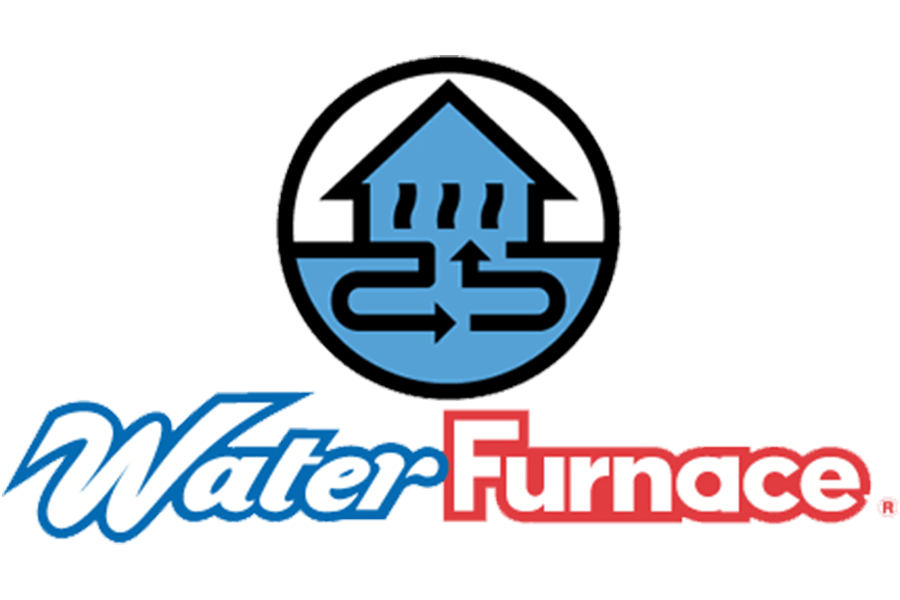
This company is one of the largest manufacturers of geothermal systems in the world. They offer a wide range of products for both residential, commercial, and international use.
HVAC companies can sometimes sell you a unit directly or can help you in the search for one. They will want to help you buy one so they can get the job installing it. They may also offer to measure the space and help you determine which size or type of unit you will need.
Best places for Geothermal Systems
Geothermal heating and cooling systems can be installed in a variety of locations, but some places are better suited for these systems than others.
The best places for geothermal heating and cooling systems include:
1. Locations that have large temperature variations between summer and winter
Geothermal heating and cooling systems work best in areas that have a large temperature variation between summer and winter.
2. Areas with high energy costs
Geothermal heating and cooling systems are very efficient ways to heat and cool your home, so they are perfect for areas with high energy costs. If you live in an area with high energy costs, a geothermal system can help you save plenty of money in the long run.
3. Locations with ample land
Geothermal heating and cooling systems require quite a bit of land in order to be installed properly. If you live in an area where there is plenty of open land available, then installing a geothermal system would be no problem. However, if you live in an urban area where there is not much room for additional land development, then a geothermal system may not be the best option.
4. Areas that are prone to natural disasters
Geothermal heating and cooling systems are very reliable ways to heat and cool your home, but they can be damaged if there is a natural disaster such as a tornado or hurricane. If you live in an area that is prone to natural disasters, it’s important to make sure that your Geothermal system is properly protected.
5. Locations with a lot of rocks and soil
Geothermal heating and cooling systems need to have direct contact with rocks and soil in order to work properly. If you live in an area where there is a lot of rock and soil, then installing a Geothermal system would be no problem. However, if you live in an area where the ground is mostly concrete or asphalt, then a Geothermal system may not be able to work to its best potential.
If the area you are located in meets all of the above criteria, then a Geothermal heating and cooling system would be a great option for you. Keep in mind these are not requirements they just help the system be more effective.
Geothermal Vs Other Energy
While geothermal systems are great for renewable energy and the environment, it’s important to know and understand the other forms and how they work. Some of the other popular renewable energy sources include:
Solar:
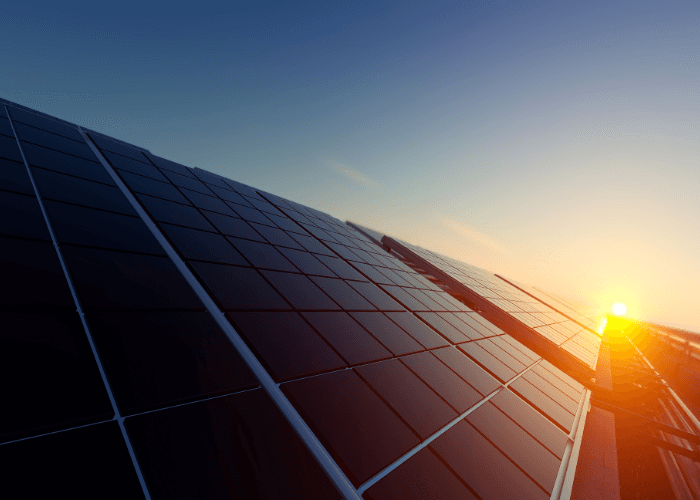
Solar energy is a form of renewable energy that comes from the sun. It is one of the most popular forms of renewable energy and has a variety of uses. Solar energy can be used to generate electricity, heat water for homes, and cool buildings.
Solar energy is a clean and renewable source of energy, and it’s growing in popularity. In 2017, solar accounted for 2% of all electricity generation in the United States. By 2040, it’s projected to account for 14% of all electricity generation.
Wind:
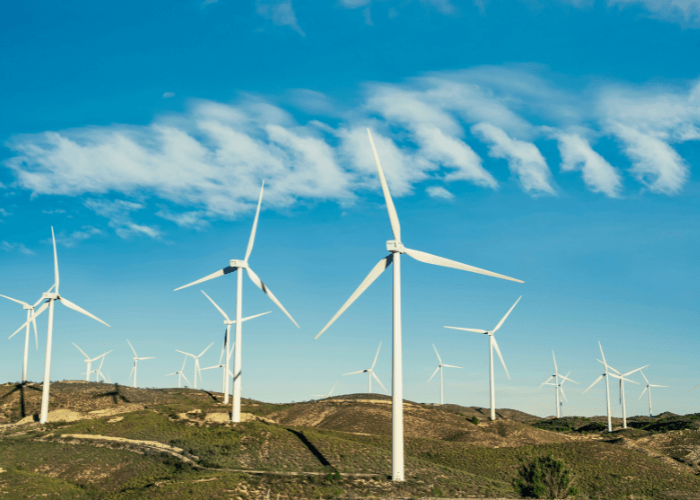
Renewable wind energy is created by harnessing the power of the wind to generate electricity. These turbines are used to capture the wind’s kinetic energy and convert it into electrical power. Wind energy is a clean and sustainable form of energy. It is one of the fastest-growing sources of electricity in the world.
Hydro:
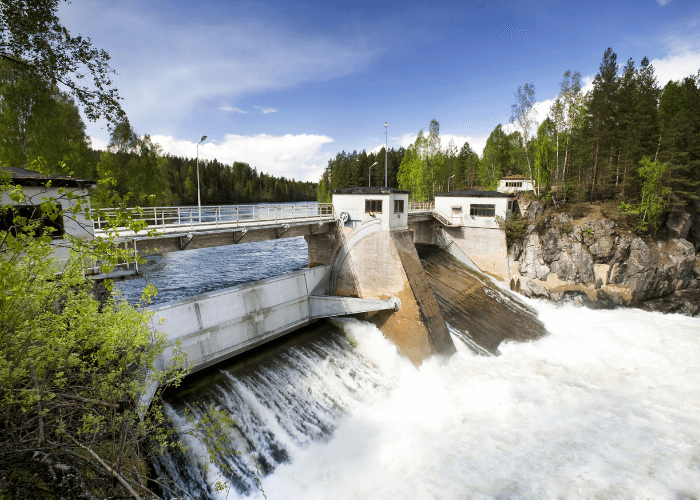
Renewable hydro energy comes from water sources, such as rivers, lakes, and oceans. It can be harnessed through turbines to create electricity or used directly in heating and cooling systems. Hydro renewable energy is a great choice for homes because it is reliable and affordable.
In addition to being a reliable source of energy, hydro renewable energy is also a very clean form of power. It doesn’t produce harmful emissions like many other forms of energy, making it a great choice for the environment.
What Can Go Wrong?
One of the benefits of a geothermal heating and cooling system is that it is relatively low maintenance. However, there are a few things that can go wrong with these systems. In the event that they do fail it is important to be prepared. One common problem is that the pump can fail, which will need to be repaired or replaced.
Additionally, if the earth around the piping moves or settles, it can cause issues for the system by breaking the pipes or restricting their flow. Check for wet spots in the ground if you suspect the pipes have been damaged in some way.
While the system uses an air filter similar to most other HVAC systems, clogging the filter is always a risk, as well as clogging the fluid pipes underground. This can restrict the system so it’s recommended to clean out the air filter once every six months or so to avoid clogging issues.
Conclusion
Geothermal heating and cooling is one of the most efficient ways to heat and cool your home or office. With the cost of traditional heating and cooling systems on the rise, more and more people are turning to geothermal technology for their needs.
In this post, we’ve outlined some of the benefits and disadvantages of geothermal heating and cooling so that you can make an informed decision about whether or not this type of system is right for you. If you are looking for a way to help the planet and be a cleaner person, geothermal might be the way to go!
If you manage a field service business, geothermal technology isn’t the only way to go green. Transitioning your business to become more streamlined with a field service software can also help the environment. Smart Service software allows companies to go digital and ditch the paper. The software can help to optimize your technicians routes so that they can get to their jobs in the most optimized way possible. It also integrates seamlessly with Quickbooks scheduling software. To learn more about all of the different ways Smart Service software can streamline everyday work process try a free software demo today!
Other eco-friendly blogs you may be interested in:
What Are the Environmental Benefits of Green Landscaping?
Environmental Safety Procedures in the Workplace and on Job Sites.

